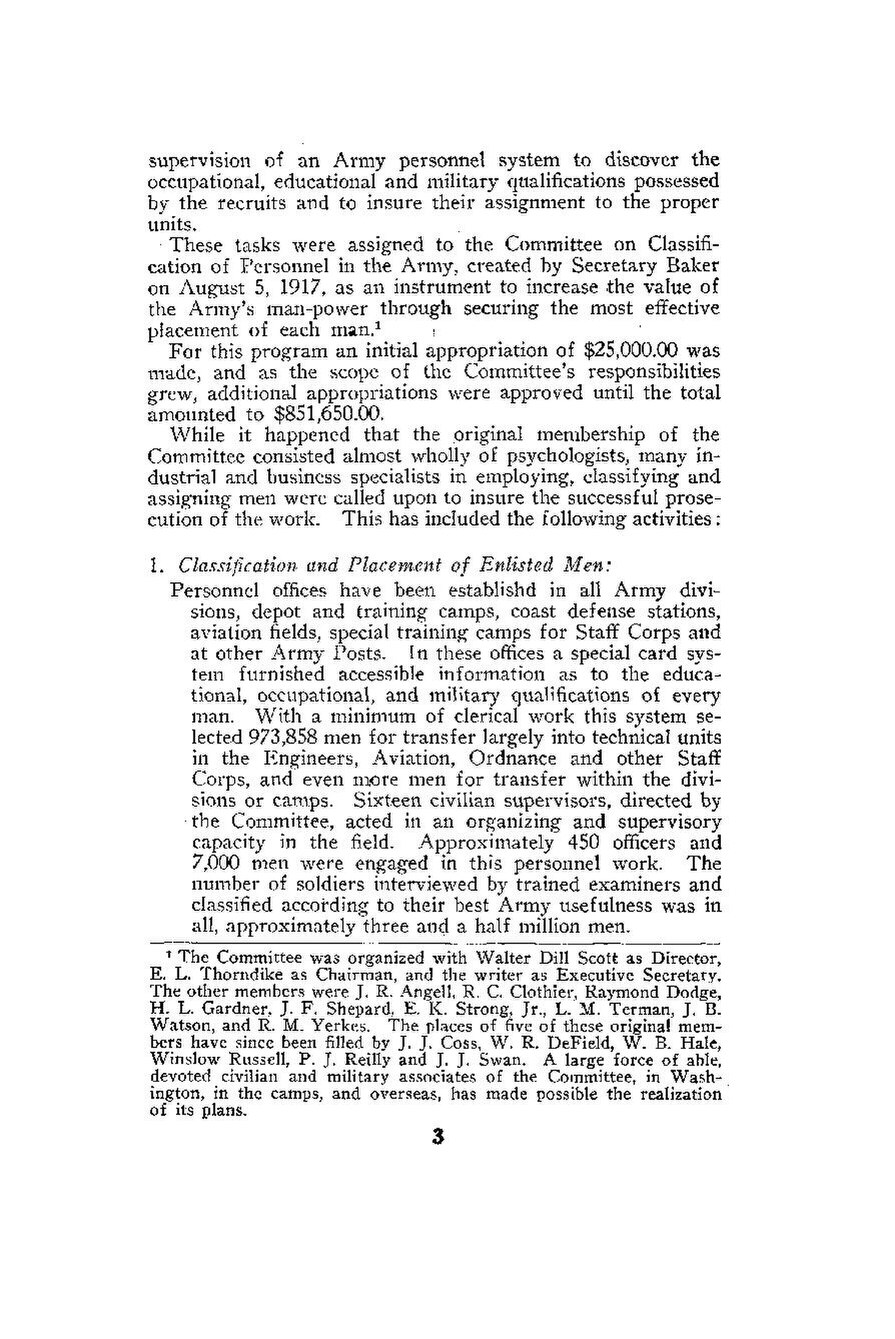supervision of an Army personnel system to discover the occupational, educational and military qualifications possessed by the recruits and to insure their assignment to the proper units.
These tasks were assigned to the Committee on Classification of Personnel in the Army, created by Secretary Baker on August 5, 1917, as an instrument to increase the value of the Army's man-power through securing the most effective placement of each man.[1]
For this program an initial appropriation of $25,000.00 was made, and as the scope of the Committee's responsibilities grew, additional appropriations were approved until the total amounted to $851,650.00.
While it happened that the original membership of the Committee consisted almost wholly of psychologists, many industrial and business specialists in employing, classifying and assigning men were called upon to insure the successful prosecution of the work. This has included the following activities:
1. Classification and Placement of Enlisted Men:
Personnel offices have been established in all Army divisions, depot and training camps, coast defense stations, aviation fields, special training camps for Staff Corps and at other Army Posts. In these offices a special card system furnished accessible information as to the educational, occupational, and military qualifications of every man. With a minimum of clerical work this system selected 973,858 men for transfer largely into technical units in the Engineers, Aviation, Ordnance and other Staff Corps, and even more men for transfer within the divisions or camps. Sixteen civilian supervisors, directed by the Committee, acted in an organizing and supervisory capacity in the field. Approximately 450 officers and 7,000 men were engaged in this personnel work. The number of soldiers interviewed by trained examiners and classified according to their best Army usefulness was in all, approximately three and a half million men.
- ↑ The Committee was organized with Walter Dill Scott as Director, E. L. Thorndike as Chairman, and the writer as Executive Secretary. The other members were J. R. Angell, R. C. Clothier, Raymond Dodge, H. L. Gardner, J. F. Shepard, E. K. Strong, Jr., L. M. Terman, J. B. Watson, and R. M. Yerkes. The places of five of these original members have since been filled by J. J. Coss, W. R. DeField, W. B. Hale, Winslow Russell, P. J. Reilly and J. J. Swan. A large force of able, devoted civilian and military associates of the Committee, in Washington, in the camps, and overseas, has made possible the realization of its plans.
3
